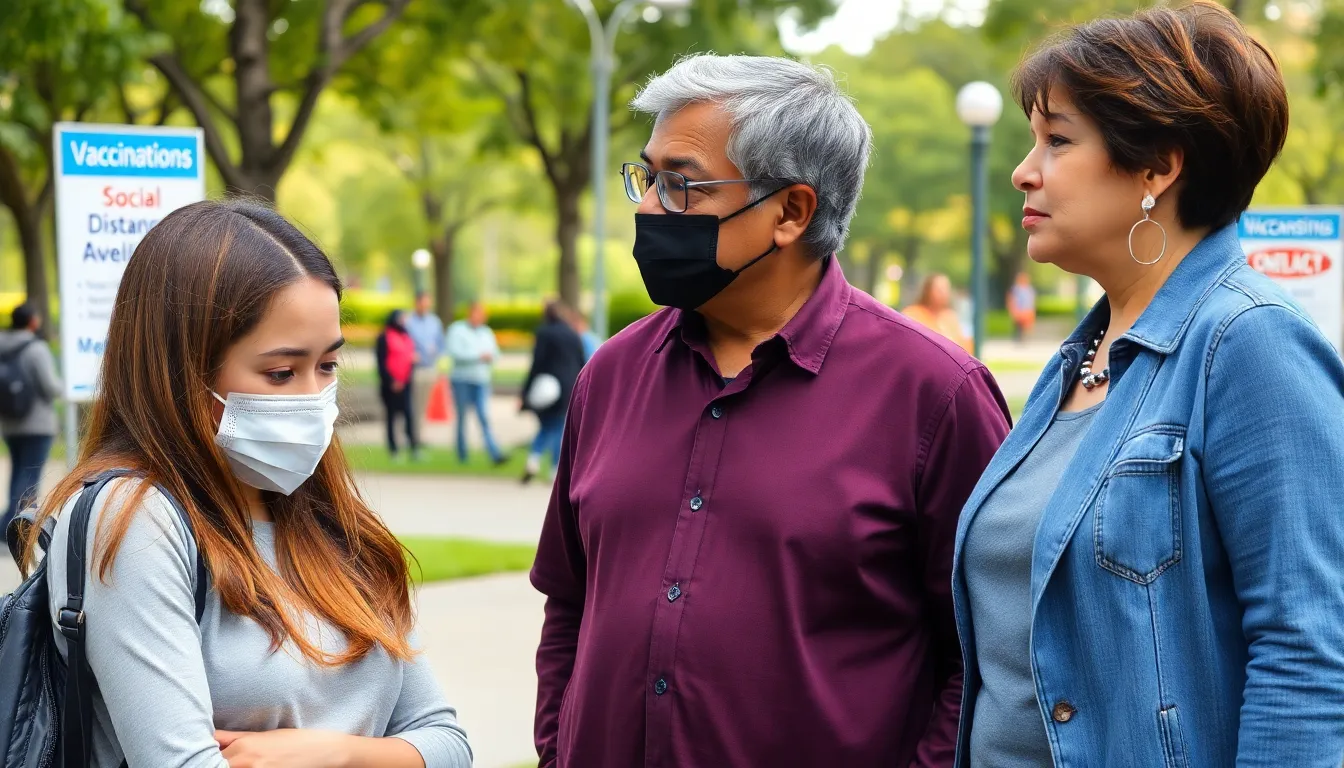In a world where danger lurks around every corner—think of that pizza delivery guy who’s always late—understanding how people respond to threats is crucial. Enter Protection Motivation Theory, the superhero of psychological frameworks that explains why individuals choose to protect themselves from harm. It’s like having a personal trainer for your brain, guiding you to make smarter choices when faced with potential risks.
Protection Motivation Theory
Protection Motivation Theory serves as a vital psychological framework for understanding how individuals assess threats and choose protective behaviors. This theory highlights the cognitive processes involved in risk assessment and decision-making in the face of potential danger.
Historical Background
Protection Motivation Theory emerged during the late 1970s, initially developed by Ronald Rogers. He created this theory to examine how fear influenced health behavior change. Researchers built on this foundation, adapting the theory to various contexts such as health communications and environmental protection. Through its evolution, scholars expanded the framework, integrating concepts from social cognitive theory to better understand protective behaviors motivated by perceived threats.
Key Concepts
Key concepts underpinning Protection Motivation Theory include perceived severity, perceived vulnerability, response efficacy, and self-efficacy. Perceived severity refers to an individual’s assessment of the potential harm from a threat. Perceived vulnerability relates to how likely one feels to experience that threat. Response efficacy assesses the effectiveness of recommended protective behaviors, while self-efficacy reflects an individual’s confidence in their ability to enact those protective behaviors. Together, these concepts drive individuals’ motivations to adopt preventive measures and manage risks effectively.
Components of Protection Motivation Theory

Protection Motivation Theory includes two main components: threat appraisal and coping appraisal. Both elements play crucial roles in determining how individuals assess risks and choose protective behaviors.
Threat Appraisal
Threat appraisal involves evaluating the potential danger of a specific threat. Individuals assess two primary factors: perceived severity and perceived vulnerability. Perceived severity refers to the magnitude of harm that could occur due to the threat. A significant disease outbreak heightens the perceived severity of health risks. Perceived vulnerability represents the likelihood of experiencing that threat. If someone believes they are at high risk of contracting a virus, their perceived vulnerability increases. These evaluations influence a person’s motivation to act, as greater perceived severity and vulnerability often lead to stronger protective instincts.
Coping Appraisal
Coping appraisal focuses on the effectiveness of the strategies available to counter the threat. This component consists of response efficacy and self-efficacy. Response efficacy measures the perceived effectiveness of recommended actions in reducing risk. For example, individuals might view vaccinations as effective against infectious diseases. Self-efficacy, on the other hand, reflects an individual’s confidence in their ability to perform the protective behavior. If someone believes they can successfully practice social distancing or follow health guidelines, their self-efficacy enhances their motivation to engage in protective actions. Together, these factors help shape health behavior decisions in the face of perceived threats.
Applications of Protection Motivation Theory
Protection Motivation Theory demonstrates its value across various contexts, particularly in health behaviors and environmental concerns.
Health Behaviors
Protection Motivation Theory serves as a foundation for understanding health-related decision-making. Researchers apply its principles to design effective health campaigns. Campaigns highlight perceived severity of health risks, such as smoking-related diseases, and maximize perceived vulnerability among target audiences. Increased awareness drives individuals to adopt preventive measures, like vaccinations or regular screenings. Programs often take advantage of self-efficacy to empower individuals. By building confidence in their ability to enact change, participants are more likely to engage in healthier lifestyles. This framework has successfully facilitated behavior change in areas like substance abuse, diet management, and safe sex practices.
Environmental Concerns
Protection Motivation Theory also finds utility in addressing environmental issues. Organizations use it to raise awareness about climate change impacts and advocate for sustainable practices. By emphasizing perceived severity of environmental threats, such as rising sea levels and extreme weather, individuals feel more compelled to take action. Strategies leverage response efficacy by providing actionable steps, like reducing carbon footprints through recycling and energy conservation. Self-efficacy plays a critical role, allowing individuals to believe they can contribute to meaningful change. Consequently, this approach has supported initiatives in areas like conservation efforts, waste reduction campaigns, and natural resource management.
Critiques of Protection Motivation Theory
Protection Motivation Theory faces scrutiny in various aspects of its application and effectiveness. Critics highlight certain limitations that affect its overall efficacy in predicting behavior changes.
Limitations
Some critics argue that the theory oversimplifies complex behavioral motivations. The focus on fear-based messages may not resonate with all individuals. This approach can lead to desensitization over time, reducing its effectiveness. Researchers also point out that it assumes individuals rationally process threats, overlooking emotional factors that influence decision-making. Limited attention to socio-cultural contexts can lead to less effective interventions in diverse populations. Furthermore, the model does not fully account for external barriers that might hinder protective behaviors.
Future Directions
Further research could enhance Protection Motivation Theory’s applicability in real-world settings. Researchers might explore integrating emotional and social factors to improve predictions about behavior change. Developing interventions tailored to various cultural backgrounds could increase effectiveness. Addressing external barriers within the framework may provide a more holistic understanding of motivations. Continuous refinement of the theoretical model is necessary, ensuring it remains relevant in contemporary contexts, particularly concerning rapidly evolving health and environmental challenges.
Conclusion
Protection Motivation Theory serves as a vital tool for understanding how individuals assess and respond to threats. By examining the interplay between threat appraisal and coping appraisal, it offers insights into the motivations behind protective behaviors. Its applications span health and environmental contexts, effectively guiding behavior change through enhanced self-efficacy and awareness of risks.
Despite its strengths, ongoing critiques highlight the need for a more nuanced approach that considers emotional and social influences. Future research should focus on integrating these elements to refine the theory, ensuring it remains relevant in addressing contemporary challenges. As threats evolve, so too must the strategies for motivating individuals to take protective action.

